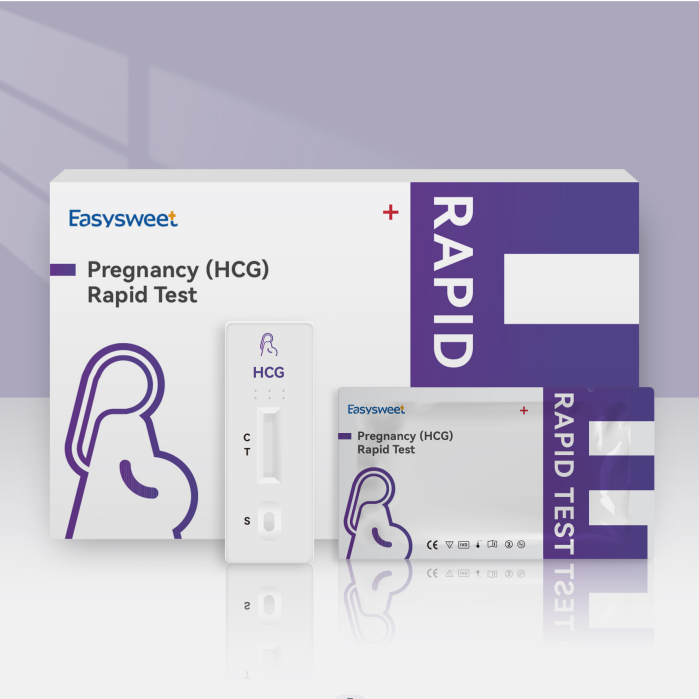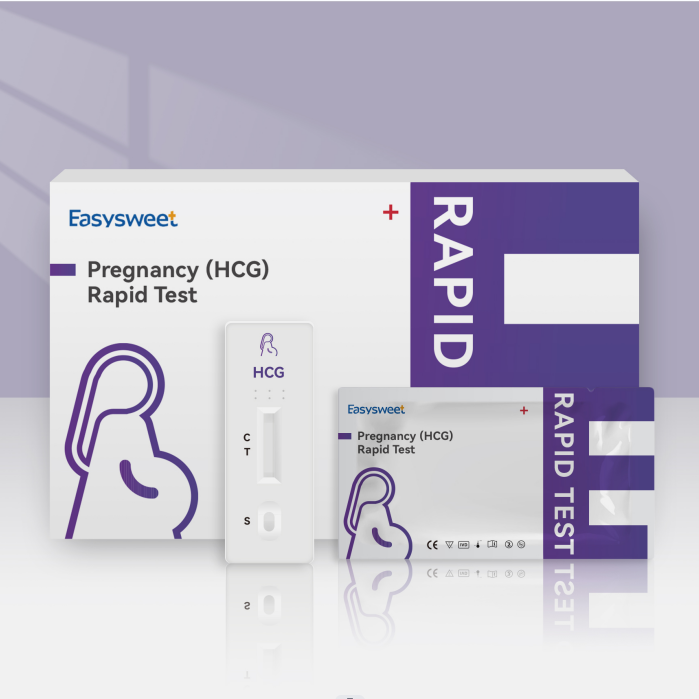Ovulation is the release of an egg from a woman's ovaries and is critical for pregnancy. Ovulation is spontaneously triggered about 36-40 hours after blood levels of a hormone called luteinizing hormone (LH) rise. This is called an LH surge. Once released from the ovary, the egg is picked up and travels down the fallopian tube, where it meets sperm to fertilize it. Easysweet Ovulation test can detect the value of LH.
Why is ovulation important?
Ovulation problems are a common cause of infertility. For couples trying to conceive, knowing when a woman ovulates is especially helpful in planning when to have sex. If a woman wants to find out why she is not pregnant, it is helpful to know if she is ovulating. A regular menstrual cycle of between 21 and 35 days, accompanied by menstrual cramps, is a good sign of ovulation. There are several ways to detect ovulation, including: basal body temperature (BBT) charts, urine test kits to measure LH levels, blood tests to measure certain hormone levels, and transvaginal ultrasound.

What tests are available to check for ovulation?
blood tests to measure hormone levels
Estradiol (a type of estrogen) is produced when the follicle grows, and its levels rise rapidly just before ovulation. If fertility drugs are being used to induce ovulation in a woman, estradiol levels are checked more frequently to keep an eye on follicle growth, but it will not be used to tell you when ovulation is likely.
Elevated levels of LH in the blood can predict when the follicle (the sac in which the egg matures) is mature and ready to ovulate. Because LH is released in pulses or short bursts, a single blood or urine test doesn't always pick up an LH surge.
Elevated progesterone levels in the blood in the week before menstruation usually indicate that ovulation has occurred, but it is impossible to predict when it will occur.
Easysweet Ovulation test for measuring Luteinizing Hormone (LH) levels
These Easysweet Ovulation tests, available on our website, show changes in LH levels in a woman's urine. Because LH hormone builds up in the urine, ovulation usually occurs within 12 to 24 hours once LH hormone is detected in the urine (usually about 14 days before a woman's period begins). For women with irregular menstruation, urine testing should be scheduled according to the earliest and latest dates of expected ovulation. Urine testing for an LH surge should begin at least 2 days before expected ovulation and continue until the LH surge or day 20.
A 5-day test has an 80% chance of detecting ovulation and a 10-day test has a 95% chance. Once the LH surge is documented, there is no need to continue testing during that cycle. Sometimes, despite the LH surge, ovulation may not occur within a cycle. If ovulation is not detected for 2 or more consecutive cycles, there may be a problem with ovulation and you should discuss this with your healthcare provider.
The Easysweet Ovulation test checks for LH and estrogen in the urine. This does not necessarily increase your chances of getting pregnant, and it should not be used if you are taking medication to help ovulation.
transvaginal ultrasound
Eggs develop in a part of the ovary called a follicle (fluid-filled sac). The follicle grows in size as the egg gets ready to be ovulated. Follicle growth can be measured with ultrasound, a technique that uses sound waves to produce an image on a monitor screen, using a tampon-like probe placed in the vagina. Before ovulation, the follicle wall is thin and filled with fluid. Ovulation usually occurs when the follicle is between 1.8 and 2.5 centimeters in size. For women undergoing fertility treatment, ultrasound can help time intercourse or insemination. For women taking fertility drugs, ultrasounds may be done on different days of the menstrual cycle to measure and monitor each follicle.
Basal Body Temperature (BBT) Chart
Taking your basal body temperature daily can help determine if you have ovulated. However, BBT charts only estimate when ovulation will occur and can confirm that ovulation has occurred but cannot predict when ovulation will occur. While not terribly helpful or accurate for intercourse timing, it's an inexpensive, easy way to gather information at home.
While determining if and when you're ovulating may seem frustrating and time-consuming, it's often an important step in achieving pregnancy. It is important that women work with their healthcare provider to determine which ovulation test is best for them. If these tests show that a woman is not ovulating, or that her cycles are irregular, treatment may be available to correct the problem and increase the chances of a successful pregnancy.
Some of the content of the article comes from the Internet, if there is infringement, please contact us.


